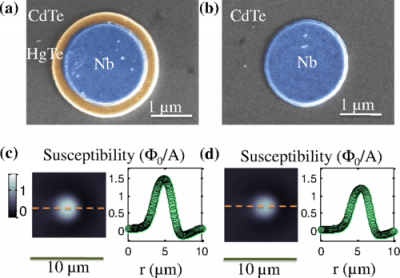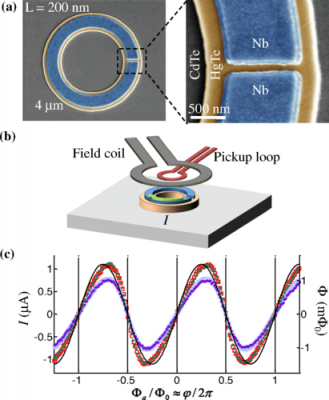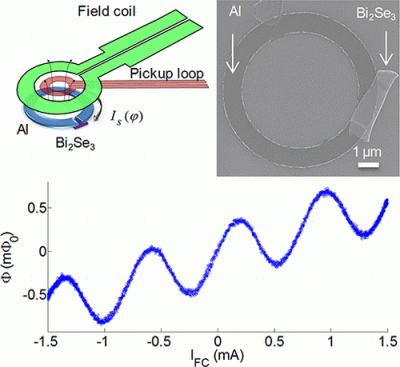Non-sinusoidal current-phase relationship in Josephson junctions of the 3D topological insulator HgTe
We use superconducting quantum interference device microscopy to characterize the current-phase relation (CPR) of Josephson junctions from the three-dimensional topological insulator HgTe (3D HgTe). We find clear skewness in the CPRs of HgTe junctions ranging in length from 200 to 600 nm. The skewness indicates that the Josephson current is predominantly carried by Andreev bound states with high transmittance, and the fact that the skewness persists in junctions that are longer than the mean free path suggests that the effect may be related to the helical nature of the Andreev bound states in the surface of HgTe. These experimental results suggest that the topological properties of the normal state can be inherited by the induced superconducting state, and that 3D HgTe is a promising material for realizing the many exciting proposals that require a topological superconductor.s


Direct measurement of current-phase relations in superconductor/ topological insulator/ superconductor junctions
Proximity to a superconductor is predicted to induce exotic quantum phases in topological insulators. Here, scanning superconducting quantum interference device (SQUID) microscopy reveals that aluminum superconducting rings with topologically insulating Bi2Se3 junctions exhibit a conventional, nearly sinusoidal 2π-periodic current-phase relations. Pearl vortices occur in longer junctions, indicating suppressed superconductivity in aluminum, probably due to a proximity effect. Our observations establish scanning SQUID as a general tool for characterizing proximity effects and for measuring current-phase relations in new materials systems.

